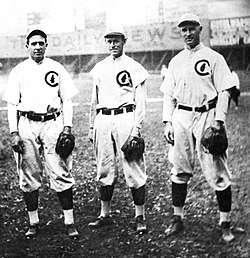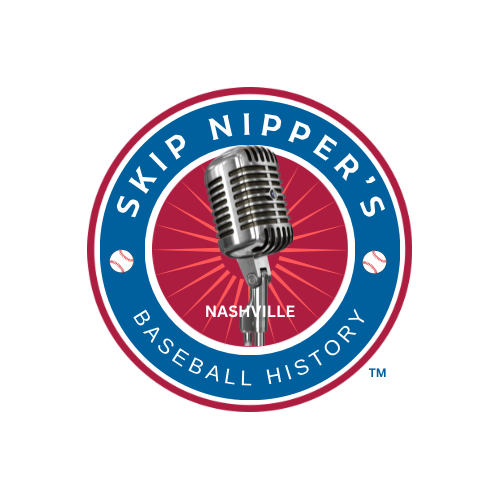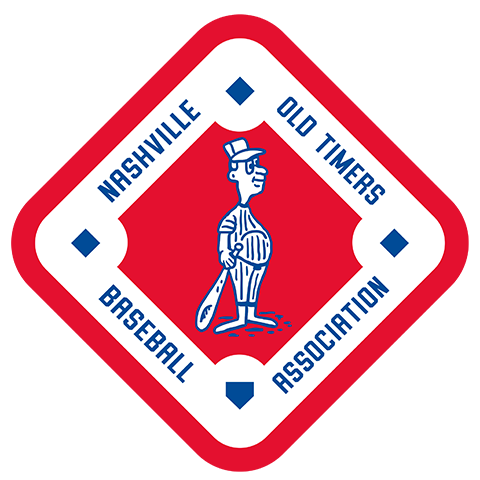On October 11, 1951, when the Nashville club signs a working agreement with the New York Giants, it ends a long association with the Chicago Cubs. Upon Larry Gilbert’s arrival in the southern city, in 1939 he continued owner Fay Murray’s working agreement with the Brooklyn Dodgers through the 1942 season and signed his club on with the Chicago. Gilbert was even considered to manage or coach the Cubs.
But the relationship goes back much further than that. In 1885 Cap Anson brought his Chicago White Stockings (often called Anson’s Colts) to Nashville. On April 10, his club wins over Nashville’s professional team 4-2 before 4,000 fans.
In 1903 the Chicago baseball team would become the Cubs. As early as 1908 the National League team visited Nashville for a series of exhibition games that continued for another 10 years.
In front of 3,500 in attendance at Sulphur Dell on April 6, 1908, the Cubs are victorious over Nashville 7-0. Chick Fraser holds the Vols to two hits, both by Doc Wiseman. The next day, the Cubs beat Nashville as Chicago pitcher Carl Lundgren holds the Vols to two hits once again, this time for a 7-2 win.
The famous “Tinkers-to-Evers-to-Chance” combination has one double play in the game.

Coming off their 1908 World Series victory over the Detroit Tigers, the Cubs visited Nashville once again, this time to play a late-March three-game series. Manager Bill Bernhardt’s Vols lost all three by scores of 3-0, 3-0, and 11-2. Boston Red Sox players attended the game as both major league squads had set up camp in Nashville (the Red Sox won 9-2 on April 1 and 10-2 the following day.)
In 1910, on March 28 and 29, Nashville loses by consecutive 3-1 scores. In the third game, the Vols have 10 hits against Chicago starting pitcher and future Hall of Famer Three-Finger Brown and reliever Orval Overall but lose 9-2.
Settling in Nashville once again for two exhibition games at Sulphur Dell in 1911, the Cubs take both games, 8-4, 8-2 on March 28 and 29.
On March 24, 1912, the Vols continue their losing streak to the Cubs, 6-3. In the second inning against Nashville-born pitcher Fred Toney, Vols catcher Rowdy Elliott socked a long home run that cleared the Sulphur Dell fence by 10 feet and is considered only the second home run off a right-handed pitcher ever hit in the fabled ballpark.
Scoring four runs in the ninth inning on March 24, 1915, the Cubs win over the Vols 4-2 even though the big leaguers committed three errors. Breaking a habit of losing to Chicago, Nashville wins 3-1 on March 25, 1913, as a fistfight ensues between Heinie Zimmerman of the Cubs and umpire Hadley Williams. Zimmerman was peeved at the way the Vols were hitting pitcher Lew Richie.
On March 24, 1914, Nashville loses to the Cubs by a score of 2-0, and the next year loses again 7-4 on April 4 as Cy Williams has two home runs for the visitors including an inside-the-park homer.
Williams has another home run on April 7, 1915, along with Cubs outfielder Frank Schulte, in a 12-1 win over Nashville at Sulphur Dell. Vols third baseman Johnny Dodge has two errors and the Cubs outhit Nashville 17-5 in Chicago’s win.
It appears the two clubs did not play each other during 1916, but a new agreement that includes the Cubs was on the horizon. On February 6, 1917, having broken off talks with the St. Louis Browns, it was expected the Nashville Baseball Club will sign a working agreement with the Chicago Cubs.
On March 6, a working agreement was announced with the Chicago Cubs whereby the major league club would provide an infielder, outfielder, and pitcher each season.
Sources
baseball-reference.com
newspapers.com
Paper of Record
sabr.org
© 2021 by Skip Nipper. All Rights Reserved.



